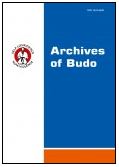2021, Volume 17
Performance and biological response of middle-power under hyperbaric hyperoxic conditions in judo athletes – pilot studies
Toshihiro Takezawa1
1Faculty of Health and Sports Science, University of Juntendo, Chiba, Japan
Author for correspondence: Toshihiro Takezawa; Faculty of Health and Sports Science, University of Juntendo, Chiba, Japan; email: takezawa_1983@yahoo.co.jp
Full text
Abstract
Background and Study Aim: Judo athletes are required to compete at maximum performance for 4-5 min in most competitions. In addition, various energy supply mechanisms are used in judo because it requires a proper combination of complex and competition-specific muscle strength due to its competitive characteristic. However, considering the competition-time glycolysis, middle-power is thought to be the main mechanism that is utilized. In recent years, hyperbaric oxygen therapy (HBO), which is useful for recovering physical function, has been reported as a training device. Although no effect has been observed in high-power training, performance is shown to be significantly improved in 30-s middle-power training. Therefore, we set up 60-s middle-power training, similar to a judo match, under normobaric normoxia (NN) and hyperbaric hyperoxia (HH) environments. The purpose of this study is knowledge about the performance of judo athletes and them biological response of a normal pressure, normal oxygen environment (normobaric normoxia, NN) and hyperbaric high oxygen environment (hyperbaric hyperoxia, HH) while exerting middle-power for 60 seconds.
Material and Methods: This study targeted 10 participants. The measurement items were average work (watt) and peak rotation speed as performance indexes, and body weight, heart rate (HR), the blood lactate concentration, and peripheral oxygen saturation (SpO2) as physiological indexes.
Results: Performance exhibited under HH conditions was higher than that under NN conditions because the average total work amount was significantly higher in the HH group with no decrease in peak rotation speed.
Conclusions: Considering the suppression of the exercise-associated decrease in oxygen saturation, and the maintenance of the oxygen utilization capacity of the body at a high level under HH conditions, it is highly possible that HH contributes to higher performance.
Key words: specific hypoxic chamber, judo match, exercise load experiments, training




